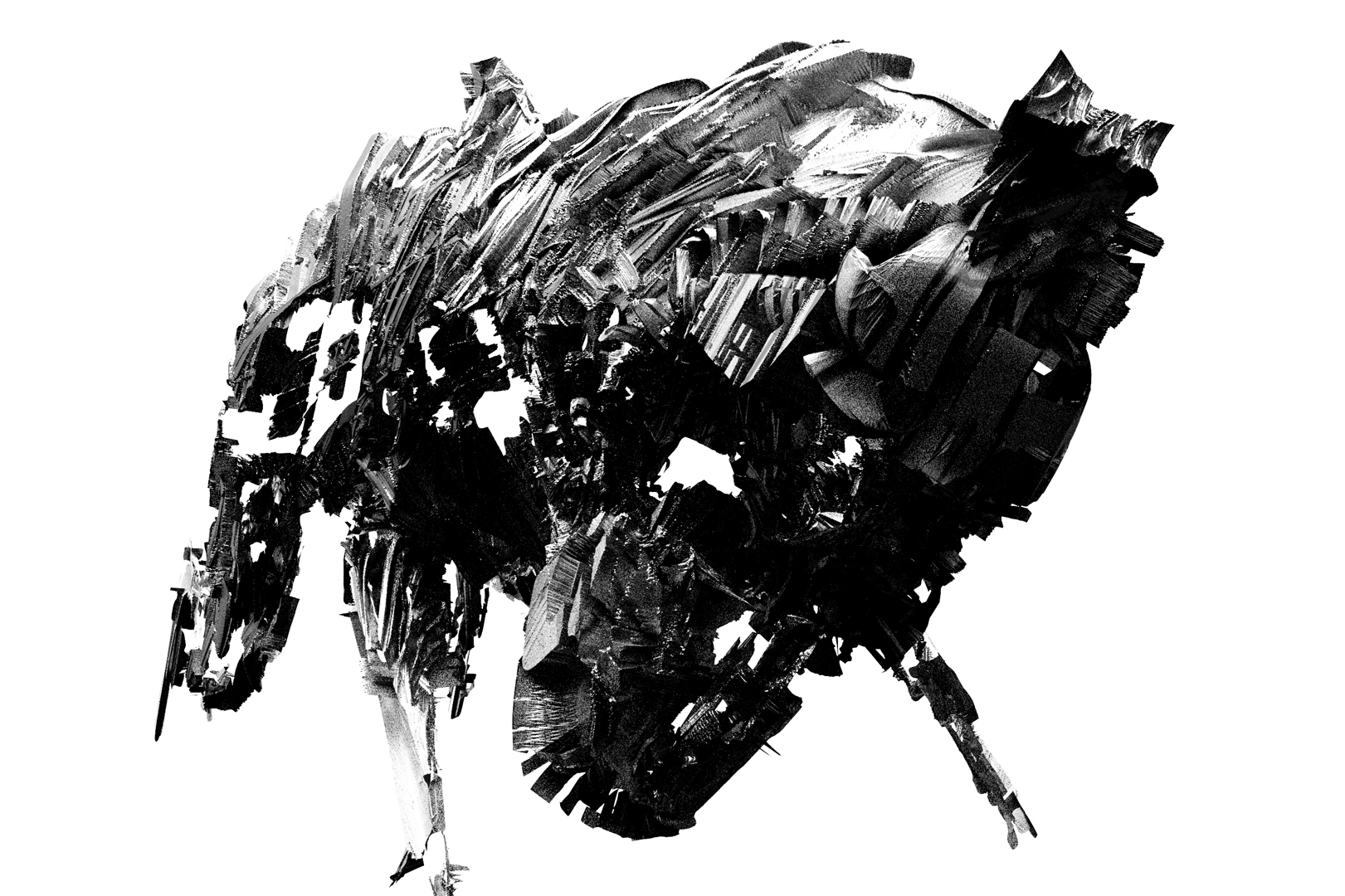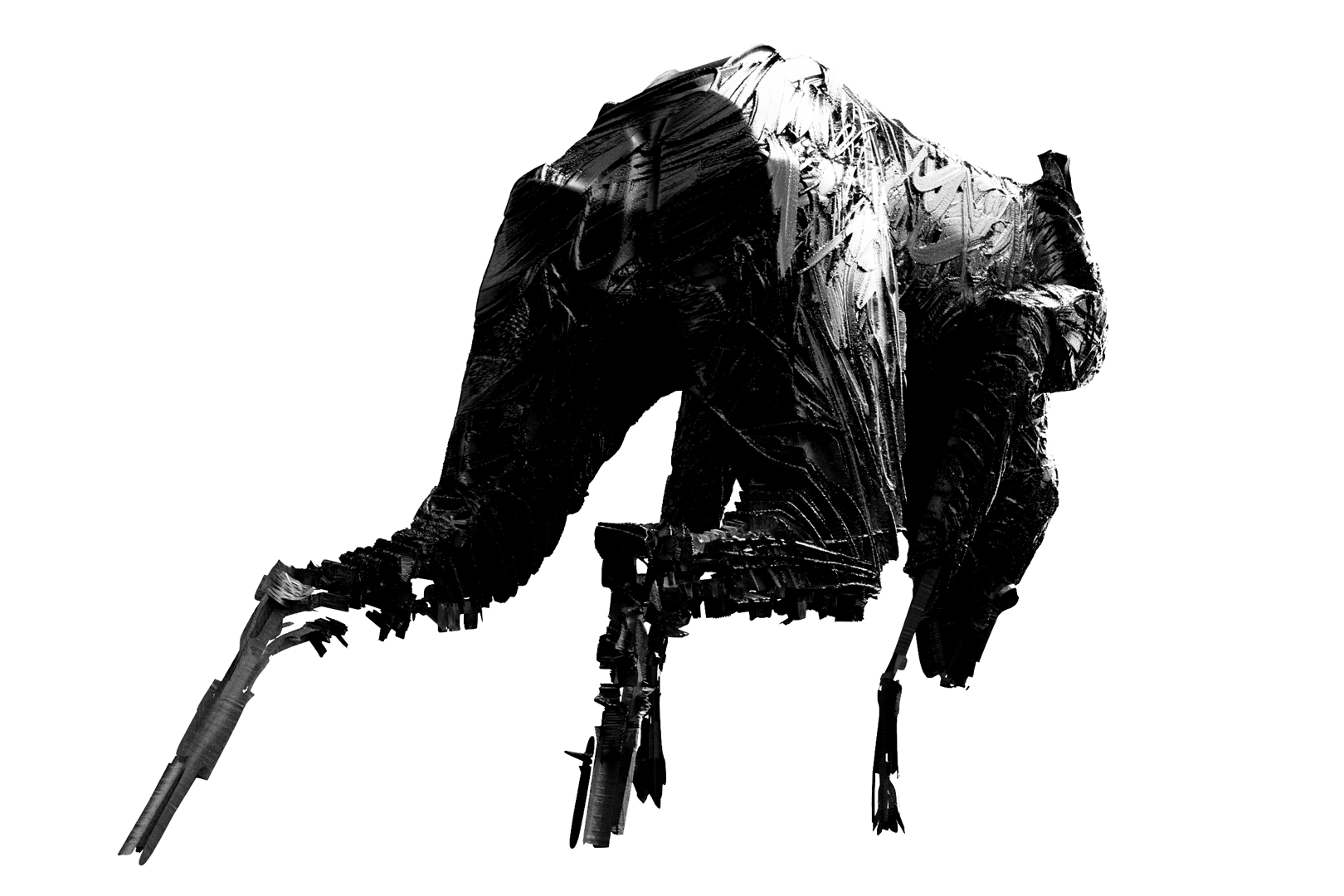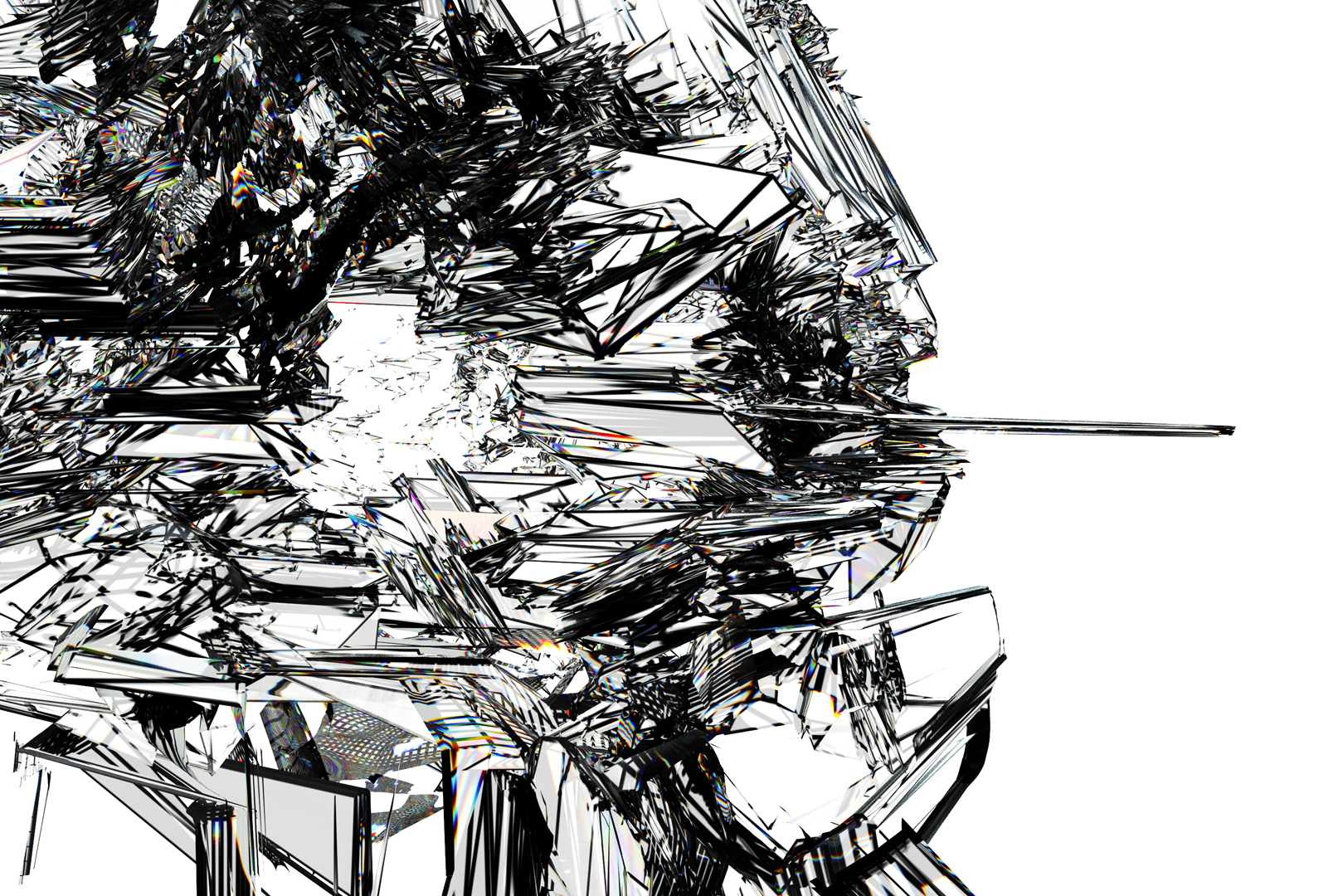Łukasz Pazera: Dog of Zone
Artist(s):
Title:
- Dog of Zone
Exhibition:
Creation Year:
- 2019
Medium:
- Traditional drawing (ink on paper), digital drawing, computer animation, programming, organic but digitally processed sound
Size:
- 2.5m x 5m x 6m
Category:
Artist Statement:
Summary:
Exploration of the concept of the “Zone” inspired by “Roadside Picnic” novel written by Arkady and Boris Strugatsky, a search for individual artistic expression within a complex digital environment consisting of multiple medias (traditional and digital drawing, computer animation, programming and sound) with visuals drawing from abstract expressionism (the art of Franz Kline in particular) but transposed to and enhanced by the means of interactive computer animation.
Extended Summary:
The Zone. Seemingly dead space. It becomes a dominating, uncontrolled, autonomous entity in a presence of a human being . It manifests its reactions by changing state of objects that belong to it. The Dog is one such object. It’s an expression of an abrupt, aggressive motion and destructive influence of the Zone. The concept of the Zone is inspired by “Roadside Picnic” – a novel published in 1972 and written by Arkady and Boris Strugatsky but can also be tied to movie “Stalker” directed by Andrei Tarkovsky (1979) and to a nuclear disaster that occurred on 26th of April 1986 in Chernobyl in Ukraine.
Dog of Zone merges traditional drawing, 3d computer animation, programming and organic but digitally processed sound. Taking an advantage of wide range of media Lukasz Pazera searches for means of individual expression within a complex digital environment and unifies his artistic and programming experiences in a single piece of work. Visuals draw from abstract expressionism (the art of Franz Kline especially) and are based on transposing small scale gestural drawings into the language of three dimensional computer animation but without loosing drawings’ original qualities. The resulting imagery is both expressive and precise.
The purpose of the Work is to create an impression of being in a place such as The Zone. The final effect takes a form of interactive projection dedicated for a single participant. The participant becomes co-author of the dramaturgy of events by directing the progression of events through his/her own physical activity. The projection provides a strong, compressed experience. It is tuned for an instantaneous, iterative perception.
The Zone offers a journey and some kind of reward. It all begins with white frame. The course of events is divided into three basic stages, first is manifestation – an appearance of a dog figure caused by the initial presence of the participant within the bounds of the Zone. The deconstruction starts with participant movements. Each and every strong enough activity will cause involuntary, sudden reactions from the dog. These in turn will cause gradual disintegration of its form. This process cannot be stopped, only slowed down. The essence of the dog is contained within the process of its expressive deconstruction. Narration or dramaturgy are only derivatives of the creature’s visual transformations. The reactions of the Work are dichotomous in their nature. The dog repels, discourages further activity, struggles to maintain its territory and the relative state of equilibrium extending its existence. The Zone, on the other hand, tempts, encourages action revealing subsequent stages of the disintegration of its object. Eventually, the figure will deconstruct and transform into a still image which will remain on a screen as long as the participant stays within the bounds of The Zone. This transformation is the third and final act of the projection. In the end the dog is irreversibly erased and the space is asleep again. There is no activity, no objects, no defense nor attack – only a white lit wall.
Other Information:
Dog of Zone is a notion of a living being built from a gesture transformed into a solid form moving through three-dimensional space. The artistic concept draws from experiences of abstract expressionism, especially the work of Franz Kline. Therefore it is mainly a problem of scale and gesture. It is about translating the small scale gestural drawing to the language of computer animation while preserving its original qualities. These problems are then enhanced by the temporal aspect of the project – motion, tempo and rhythm. It leads to moving picture that features an expression possible to achieve with traditional techniques only but at the same time with precision, photographic details and spatiality of digital environment.
The digital nature of visuals becomes clear in motion – dog is a three-dimensional form built from a matter that has real world properties. This makes the motion, in addition to gesture and scale – the primary means of expression. It is not about acting though, the motion is a kind of an extension of the gesture that comes from the drawing. The animation preserves this all initiating gesture. It is clearly perceptible in the final effect – after all the transformations required to transfer a flat drawing into three-dimensional space. The motion is a hybrid effect created from two layers. The first layer is a computer animation crafted with drawings serving as a reference. The second layer is a hand made animation made based on the layer one. Both layers are imposed on each other directly in three-dimensional space. Gesture is both the beginning and an end of the process of animation and this is how it remains visible throughout.
Two additional internal visual themes in the project are the exploration of the frontier between still image and animation and the exploration of the transition from figurative to abstract.
The creative method revolves around a concept of structured improvisation. It is based on a workflow in which a digital environment is built using highly technical skills first. This environment is subsequently used for a freeform creation within precisely defined bounds. In effect two opposing creative approaches are mixed together – the aforementioned freeform expression and methodical, multi-stage digital creation that includes programming.








